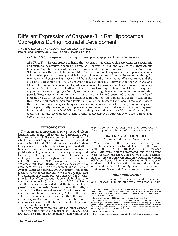摘要
Recent studies indicate that caspase-3 has distinct characteristics in postmitotic and neuronal progenitor apoptosis. Pyramidal neurons in CA1 and CA3 of the hippocampus become postmitotic during early postnatal development, whereas granule cells in the dentate gyrus (DG) undergo self-renewal throughout life. The distribution of caspase-3 in the hippocampal subfields during postnatal development is largely unknown. We used immunofluorescent staining for two isoforms of caspase-3 (an active 17 kDa isoform and an inactive 35 kDa precursor) and the Hoechst 33342 staining for nuclear chromatin to assess caspase-3 expression in the CA1, CA3, and DG of rat hippocampus during postnatal development. The expression of active caspase-3 reached a peak at P7 in CA1, at P2 in CA3, and then decreased with age. Whereas in DG, active caspase-3 expression increased slightly after P7, and remained at high levels for the rest of the investigated period. Procaspase-3 immunoreactivity was strong at P2 and decreased gradually to a basal plateau by P21 in the three regions examined. In addition, the number of apoptotic cells in the three regions all reached maximum levels at P7, and then decreased with age. These data indicate that there were specific spatio-temporal patterns of expression of active and precursor caspase-3 in the postnatally developing rat hippocampal subregions, and that the activation of caspase-3 in neuronal progenitor cells of DG and that in the postmitotic neurons of CA1 and CA3 may have distinct roles and mechanisms during postnatal development.
- 出版日期2008-9
- 单位首都医科大学
